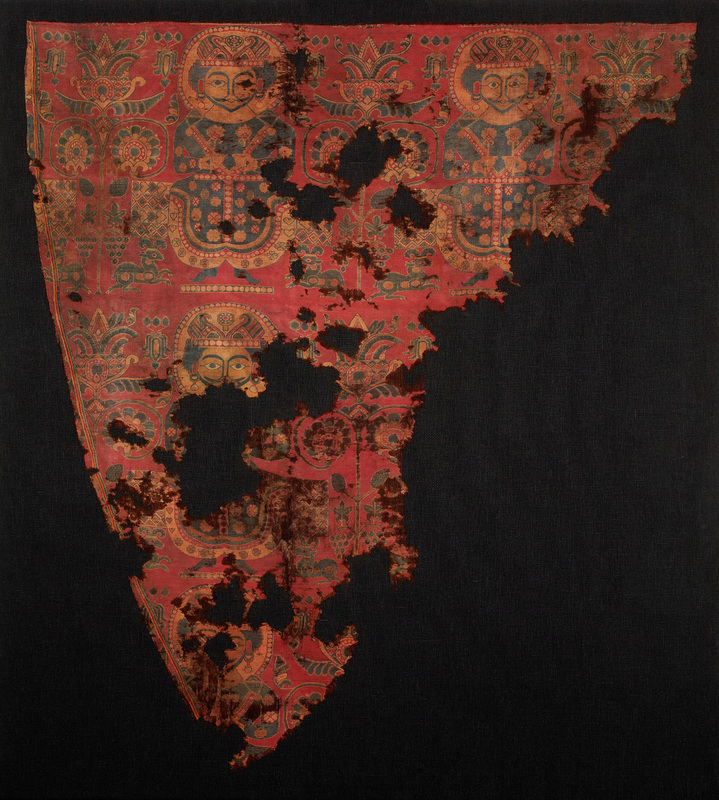Silk with Sasanian shahanshah
Type:
Textiles
Date:
Seventh to eighth century
Location or Findspot (Modern-Day Country):
Iran
Medium:
Silk
Dimensions:
94 × 85 cm
Description:
This woven silk textile made in Iran or Central Asia depicts a nimbed Sasanian shahanshah who is probably Khosrow II (r. 590–628). He wears the winged crown associated with Sasanian royalty, a motif replicated in other media, including a coin of Khosrow's daughter and a stucco panel from a house near Ctesiphon. The ruler is seated on an unusual throne supported by flanking ibexes (the biblical throne of King Solomon was flanked by lions). Repeated images of Khosrow are divided by stylized winged palmettes that closely resemble the ones depicted in mosaic in the arcade of the Dome of the Rock (textbook Fig. 4-4a).
Despite its Sasanian imagery, this samite silk postdates the Sasanians, who were defeated by the Umayyads in 651. Early Islamicate weavers produced it during the second half of the seventh century or the first half of the eighth, demonstrating their continuity with the high-quality Sasanian textile production admired and imitated as far away as Byzantium. The iconography connected the new Umayyad dynasty with the powerful empire that preceded it, an empire exemplified by its last great ruler, Khosrow II.
Despite its Sasanian imagery, this samite silk postdates the Sasanians, who were defeated by the Umayyads in 651. Early Islamicate weavers produced it during the second half of the seventh century or the first half of the eighth, demonstrating their continuity with the high-quality Sasanian textile production admired and imitated as far away as Byzantium. The iconography connected the new Umayyad dynasty with the powerful empire that preceded it, an empire exemplified by its last great ruler, Khosrow II.
Relevant Textbook Chapter(s):
3,
4
Repository and Online Resources:
• Read about this textile at The David Collection, Copenhagen
Image Credits:
The David Collection, Copenhagen, inv. no. 23/2011; photographer Pernille Klemp


